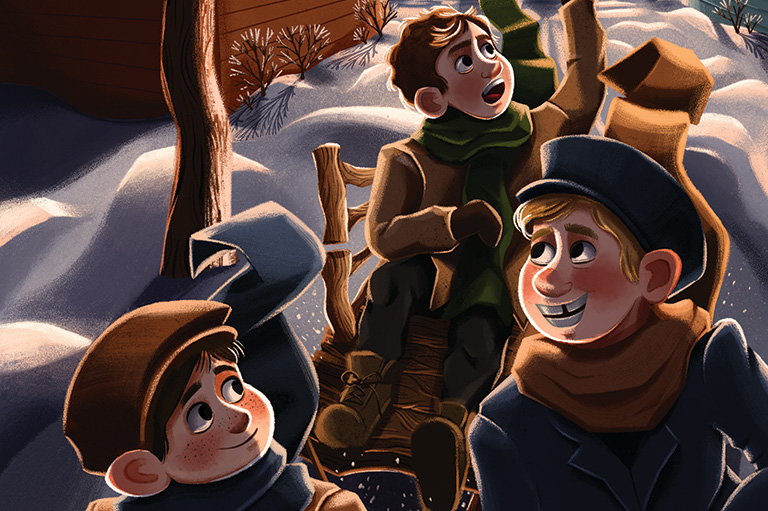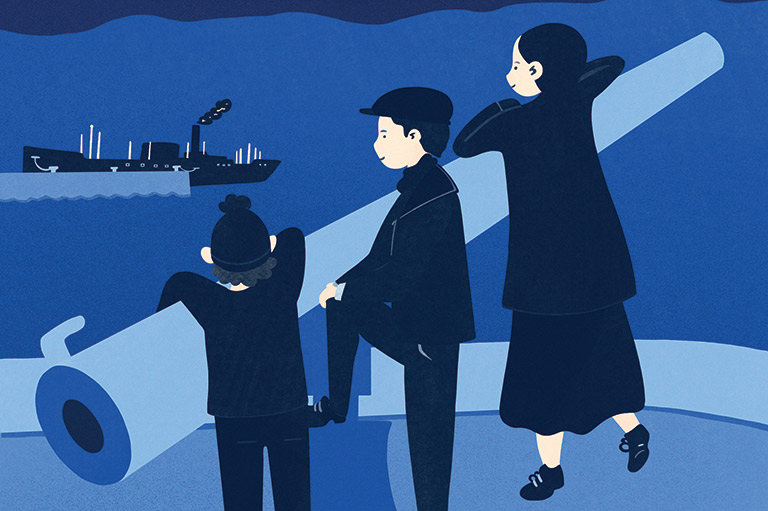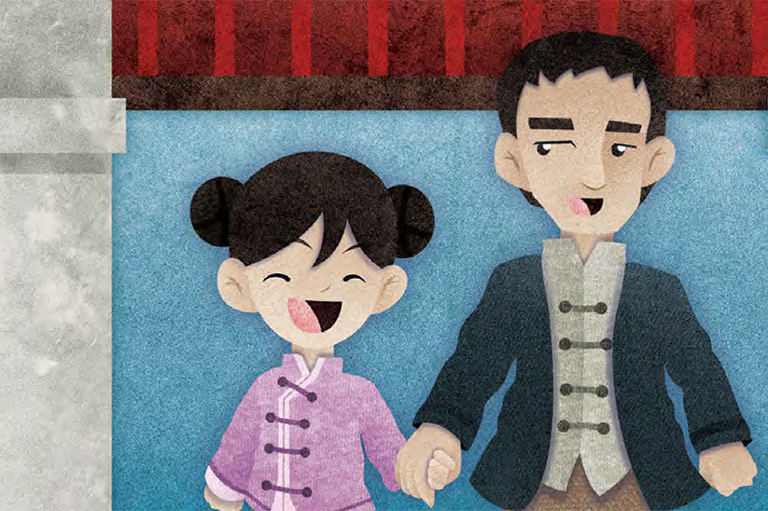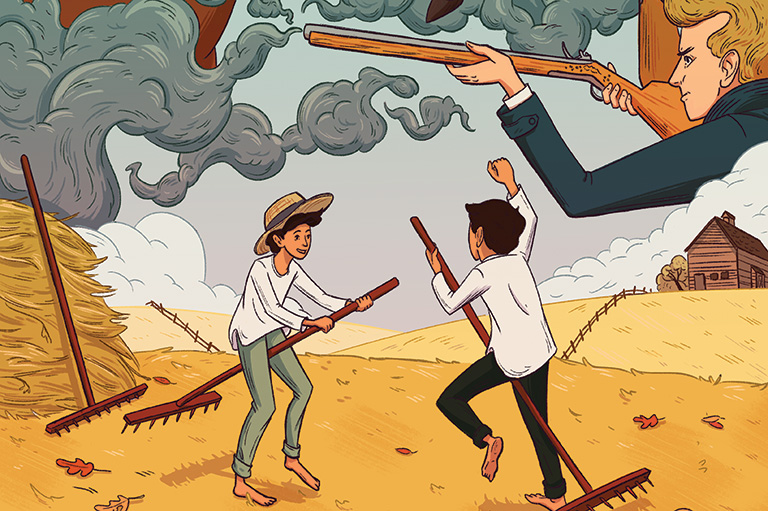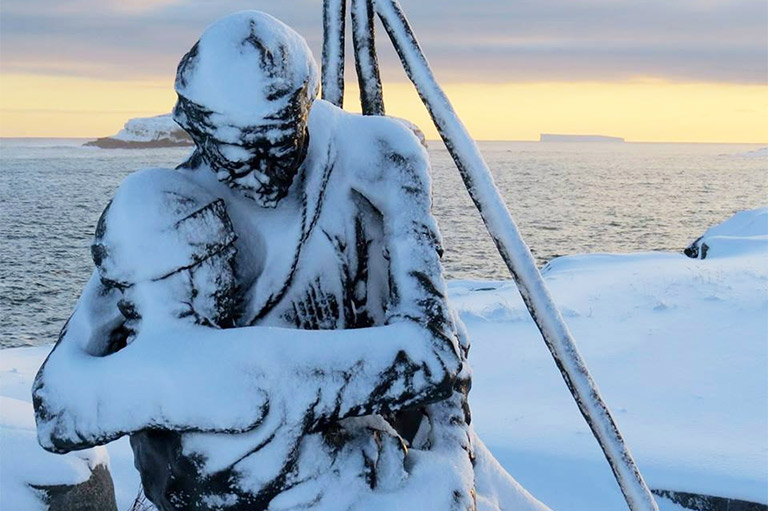What the Old Tree has Seen
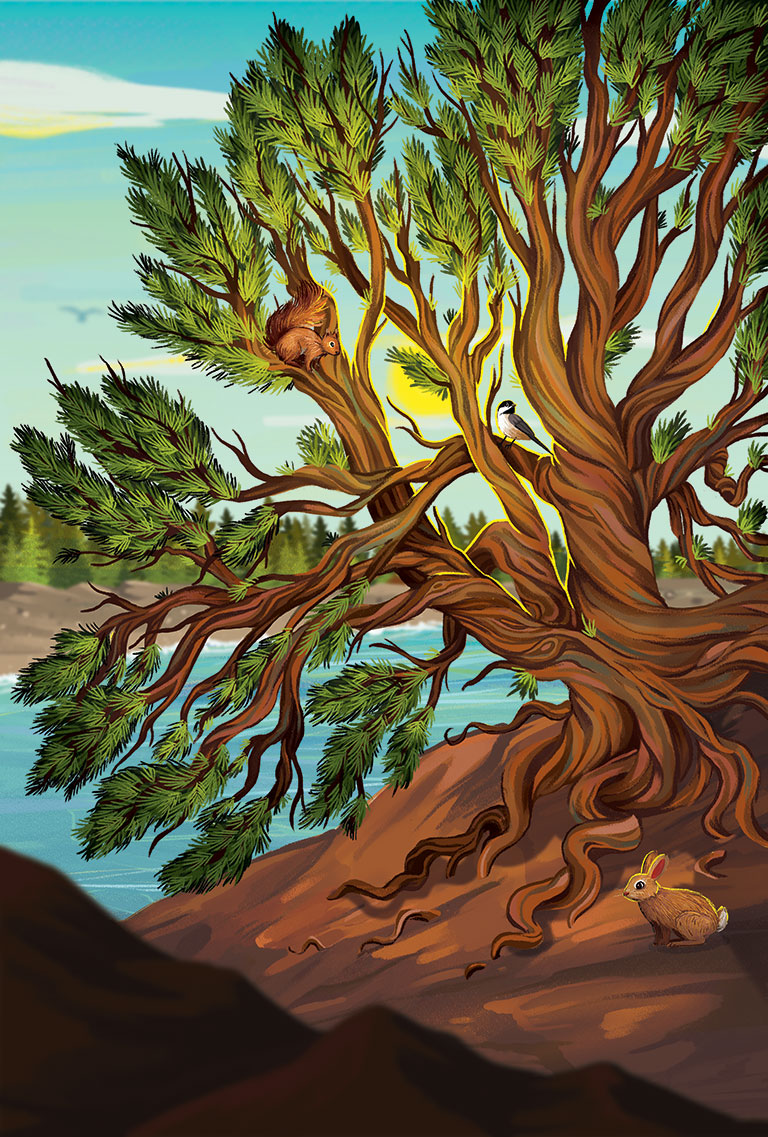
We are old friends, this rock and I. We are so close we are almost one thing. Who knows how long ago a bird dropped the seed that managed to find a tiny bit of dirt in a crack? The seed that grew into, well, me?
The wind is chilly today but I’ve felt worse. I hear voices. People, some smaller and some bigger, in bright jackets and warm boots, are coming my way. I don’t get a lot of visitors, but the ones who do come usually say the same things.
“Look how gnarly that tree is,” and, “Wow! It’s so old!”
They’re right. I am gnarly and I am old. I have seen so many days, so many people. Some come right up to me and gently touch my ancient bark. Others stand quietly and shake their heads in amazement. Many walk right on by. They don’t know that I may be the oldest of my kind, and maybe the oldest tree of all in this vast land.
For thousands of years I’ve stood right here, trunk and branches and roots slowly, slowwwwwwly twisting sideways and upward. They call my kind limber for that reason — our limber limbs that bend and snake.
I have watched the berry bushes flower, bear fruit and wither over and over again. I have watched generations of caribou thread their way among the firs and boulders. I’ve seen countless furry little creatures scurry from one hiding place to another, and I’ve seen bighorn sheep snag their wool on my cousins’ branches.
I can’t remember a time before the First Peoples. The Ancient Ones wore clothes that were brown like the earth. If they had to take an animal for their food, they gave thanks. For ages, they were the only people.
I watched from my perch as their canoes slipped through the green-blue waters below. Kisiskâciwanisîpiy they called the river, the one where even their skills with the paddle couldn’t always keep them upright in the swirling eddies. Perhaps those roundand- round waters are why people now call my home Whirlpool Point?
And then I did not see so many. Some who still came had little circles on their faces. They seemed more grim than before, as if they had seen terrible things.
It was just a short time ago, maybe two or three hundred years, that the new people came. Just a few here and there, and at first, always with so much help from the First Peoples. One or two of these men with their pink-white faces, and many more to show them the way.
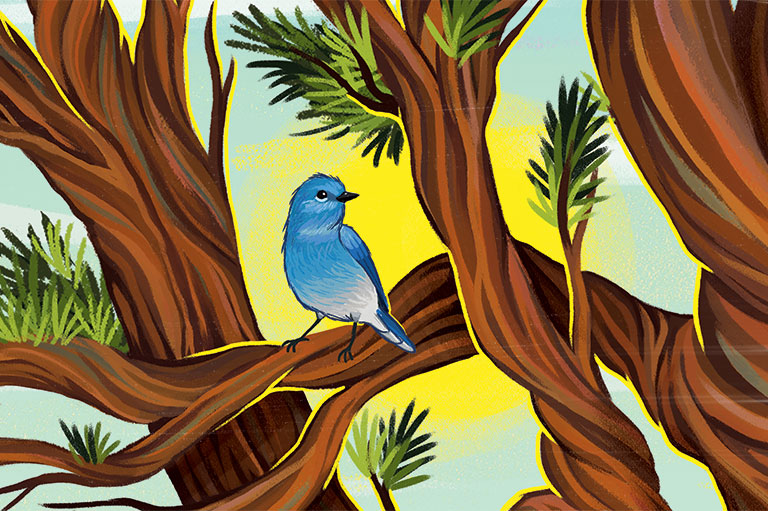
Some of the new ones looked different. They wore bright sashes and sang songs in words I had never heard. Their canoes sat low under piles of my animal neighbours’ furs and skins.
These men talked of paddling the river roadway to Rocky Mountain House and faraway York Factory. They called the river the Saskatchewan — sometimes the North Saskatchewan.
I remember one of the new men, an eager fellow who seemed to know that he had much to learn. He also came in a canoe with many helpers, but he also had a small, dark woman with him, and even smaller children. When he could not speak to the First People, she spoke for him because they were her relatives and she knew their words. He drew pictures — maps — of everything.
I have watched the churning river swell as the warmth returns each year, and subside as the glacier melt rushes east. One time, perhaps a century or so ago, as the days grew long again, the water grew angry. The icy mountain flow rose so quickly it would have topped three tall men standing on each other’s shoulders. Anything near the river banks was swept away in a flash.
Until my last few rings formed, the North Saskatchewan was the only highway here, but some of the new people were determined to push west with a road on land. Humans live so few years, but like the roadbuilders, they can do so much.
Giant firs crashed to the ground and a power I could never have imagined caused the rocks to explode. Now there is a hard, black highway where people flash past in cars and trucks at wondrous speeds. Some brave ones ride it without the metal box, on two-wheeled cycles.
The road they all travel is named for the mapmaker, David Thompson. There is no road named for his wife of the First Peoples, Charlotte Small. The air is different now. I can feel them in my needles, the strange unseeable things that land on my branches. If I were a person, I would cough, but I am a tree, so I wait for a pure breeze that is sure to come.
The waters of the Kisiskâciwanisîpiy, the North Saskatchewan, are sometimes different, too. The new people seem to think they can dump whatever they wish into it, but the river is strong and the fish still swim.
Sometimes I see canoes like the ones from before. These paddlers carry much less than the others did, and their boats are brightly coloured and not made from any tree I know.
I like it when people come to visit me, whether they know my story or not. I like their different clothes and hair and skin and sizes. I welcome them all. In some ways, they have changed so much over the ages, and in some ways they have not changed at all.
We have seen much, the rock and I. We will see much more. We have time.
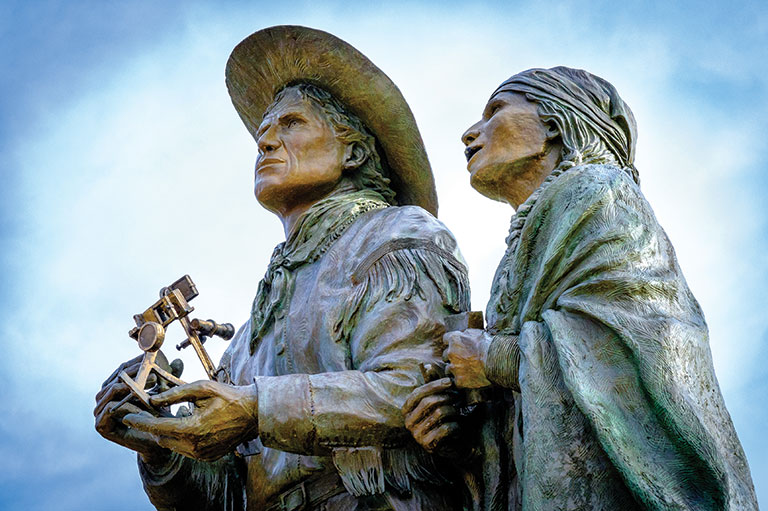
The limber pine tree in this story is real. It grows from a rock at Whirlpool Point on the North Saskatchewan River in Alberta, not too far north of Banff National Park. It’s one of the oldest trees in Canada, although it’s impossible to say exactly how old it is. People who have drilled a sample to count some of its rings say it could be 3,000 years old… or older!
Many First Nations used the North Saskatchewan to travel long distances, and the fur traders who started showing up in the 1600s did likewise. The arrival of Europeans brought diseases such as smallpox, which killed untold numbers of Indigenous people and often left survivors with round marks on their skin.
The David Thompson Highway, which officially opened in 1975, runs within a few hundred metres of the tree. The limber pine would have looked almost the same when the actual David Thompson, Charlotte Small (that’s them in the statue shown above) and their kids saw it in the early 1800s.
Today you can hike in to see it, and, as we did, imagine all the changes that have happened over its long, long life. — Dave Belcher
Themes associated with this article
Advertisement
You might also like...
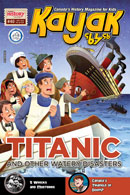
Canada’s History Archive features both English and French versions of Kayak: Canada’s History Magazine for Kids.
Kayak: Canada’s History Magazine for Kids — 3 digital issues per year for as low as $13.99. Tariff-exempt!


